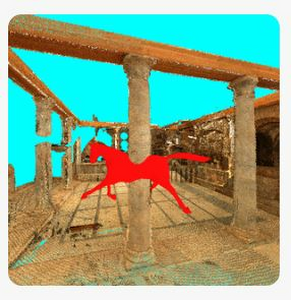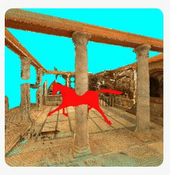Information
- Publication Type: Invited Talk
- Workgroup(s)/Project(s):
- Date: 2. May 2022
- Event: Invited Talk
- Location: LiX Polytechnique, Saclay-Paris, France
- Conference date: 2. May 2022
- Keywords: curve reconstruction, surface reconstruction, occlusions
Abstract
Curve reconstruction from unstructured points in a plane is a fundamental problem with many applications that has generated research interest for decades. Involved aspects like handling open, sharp, multiple, and non-manifold outlines, runtime, and provability as well as its extension to 3D for surface reconstruction have led to many different algorithms. The presented algorithms spans the range from improved interpolation of manifold curves over fitting noisy points with better accuracy, requiring fewer points for successful reconstruction to proving the lower limit of required samples with regard to local feature size, or provable statistical accuracy for noise-infected samples. A new sampling condition is introduced that can be expressed as a simple function of the long-standing epsilon-sampling, and permits to reconstruct curves with even fewer samples. As a side product, an algorithm for sampling curves is designed as well. A survey paper compares this body of work with all related work in this now mature field and includes an open source benchmark that allows to easily evaluate competing algorithms in multiple aspects and highlights their relative strengths. For selected 2D algorithms, extensions to 3D are given, as well as offering many novel perspectives for 3D reconstruction, where important open problems remain. As a different topic, when visualizing point clouds, occlusion can be inferred for almost free by exploiting the fact that point clouds representing surfaces are inherently 2D and squashing them in a view-based 2D data structure. This permits novel real-time methods on large point clouds such as collision detection, surface processing like cutting or editing, and efficient exploration.
Additional Files and Images
Additional images and videos
Additional files
Weblinks
BibTeX
@talk{ohrhallinger_stefan-2022-it1,
title = "Curve/Surface Reconstruction and Occlusion-enabled
Applications",
author = "Stefan Ohrhallinger",
year = "2022",
abstract = "Curve reconstruction from unstructured points in a plane is
a fundamental problem with many applications that has
generated research interest for decades. Involved aspects
like handling open, sharp, multiple, and non-manifold
outlines, runtime, and provability as well as its extension
to 3D for surface reconstruction have led to many different
algorithms. The presented algorithms spans the range from
improved interpolation of manifold curves over fitting noisy
points with better accuracy, requiring fewer points for
successful reconstruction to proving the lower limit of
required samples with regard to local feature size, or
provable statistical accuracy for noise-infected samples. A
new sampling condition is introduced that can be expressed
as a simple function of the long-standing epsilon-sampling,
and permits to reconstruct curves with even fewer samples.
As a side product, an algorithm for sampling curves is
designed as well. A survey paper compares this body of work
with all related work in this now mature field and includes
an open source benchmark that allows to easily evaluate
competing algorithms in multiple aspects and highlights
their relative strengths. For selected 2D algorithms,
extensions to 3D are given, as well as offering many novel
perspectives for 3D reconstruction, where important open
problems remain. As a different topic, when visualizing
point clouds, occlusion can be inferred for almost free by
exploiting the fact that point clouds representing surfaces
are inherently 2D and squashing them in a view-based 2D data
structure. This permits novel real-time methods on large
point clouds such as collision detection, surface processing
like cutting or editing, and efficient exploration. ",
month = may,
event = "Invited Talk",
location = "LiX Polytechnique, Saclay-Paris, France",
keywords = "curve reconstruction, surface reconstruction, occlusions",
URL = "https://www.cg.tuwien.ac.at/research/publications/2022/ohrhallinger_stefan-2022-it1/",
}


